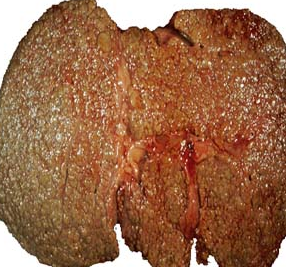
Liver Sclerosis, otherwise known as cirrhosis of the liver or End Stage Liver Disease, occurs upon progression of Fatty Liver Disease. The condition occurs when the liver tissue dies and is replaced with scar tissue, and thus the cells of the liver are unable to regenerate, leading to a smaller amount of functional liver tissue.
Causes
Fatty Liver Disease can be caused by obesity and metabolic syndrome, alcoholism, liver infection such as hepatitis A, B or C, or over-
Symptoms
Possible symptoms of sclerosis of the liver are fatigue, jaundice –
As liver failure progresses, you may also develop other conditions such as ascites or esophageal varices. Ascites is when the blood in your portal vein –
Treatment
Treating liver sclerosis involves first eliminating the cause, such as alcoholism, drug toxicity, or treating metabolic syndrome with weight loss or other medical therapies. Eliminating certain drugs and alcohol from the diet may be necessary even if they weren’t the primary cause of your condition. Unfortunately, any liver tissue that has already become scar tissue cannot be recovered. Treating the disease will only help to slow the healthy liver tissue from sclerosis or becoming scar tissue. If too much of the liver is damaged, the only treatment is a liver transplant, in which a portion of another person’s healthy liver is transplanted into your body to provide the same function your liver normally would if it were healthy.
Other treatments of liver disease generally involve treating the symptoms that occur, otherwise known as supportive care. Your edema will be treated with diuretics or other drugs that help remove fluid from your body. If you develop ascites, you may receive a parecentesis, or a procedure which removes the fluid from your abdominal cavity. If you develop esophageal varices, you may be given drugs that reduce the
amount of acid in your stomach to lessen the amount of bleeding that may occur. You will also be regularly followed by a gastrointestinal specialist. If you have ascites or esophageal varices, which are caused by portal hypertension, you may need a procedure called TIPS which will help divert blood from the portal vein in order to reduce the pressure there.
Prognosis
Life Expectancy
Life Expectancy with liver cirrhosis can depend on a number of factors, including your overall health and what caused your liver failure. Discuss your condition with your physician. Many patients can expect to live a long and healthy life even after liver cirrhosis is diagnosed, especially if a liver transplantation is provided. Liver transplantations are usually only given to patients who have demonstrated restraint and ability to live a healthy lifestyle; thus, if alcoholism or obesity is the cause of your liver failure, you will be required to prove that you have recovered from alcoholism, or lost weight if obese.
Cancer
Cirrhosis of the liver can cause increased risk of liver cancer or hepatocellular carcinoma, which is fatal. Discuss with your physician your treatment options for cirrhosis in order to avoid this and other complications.